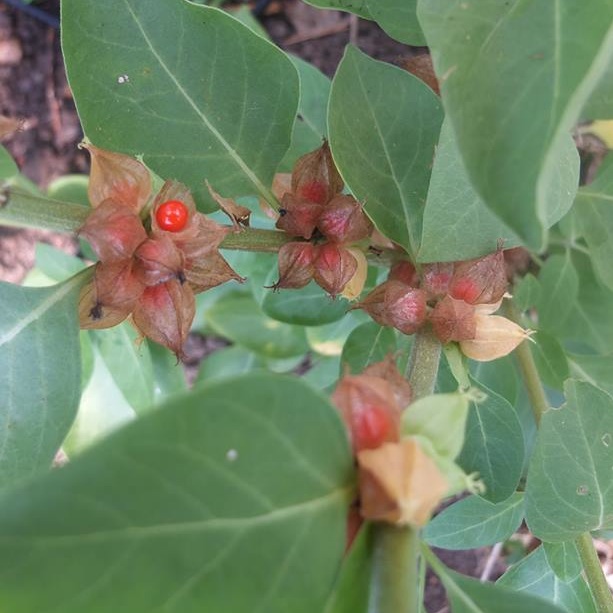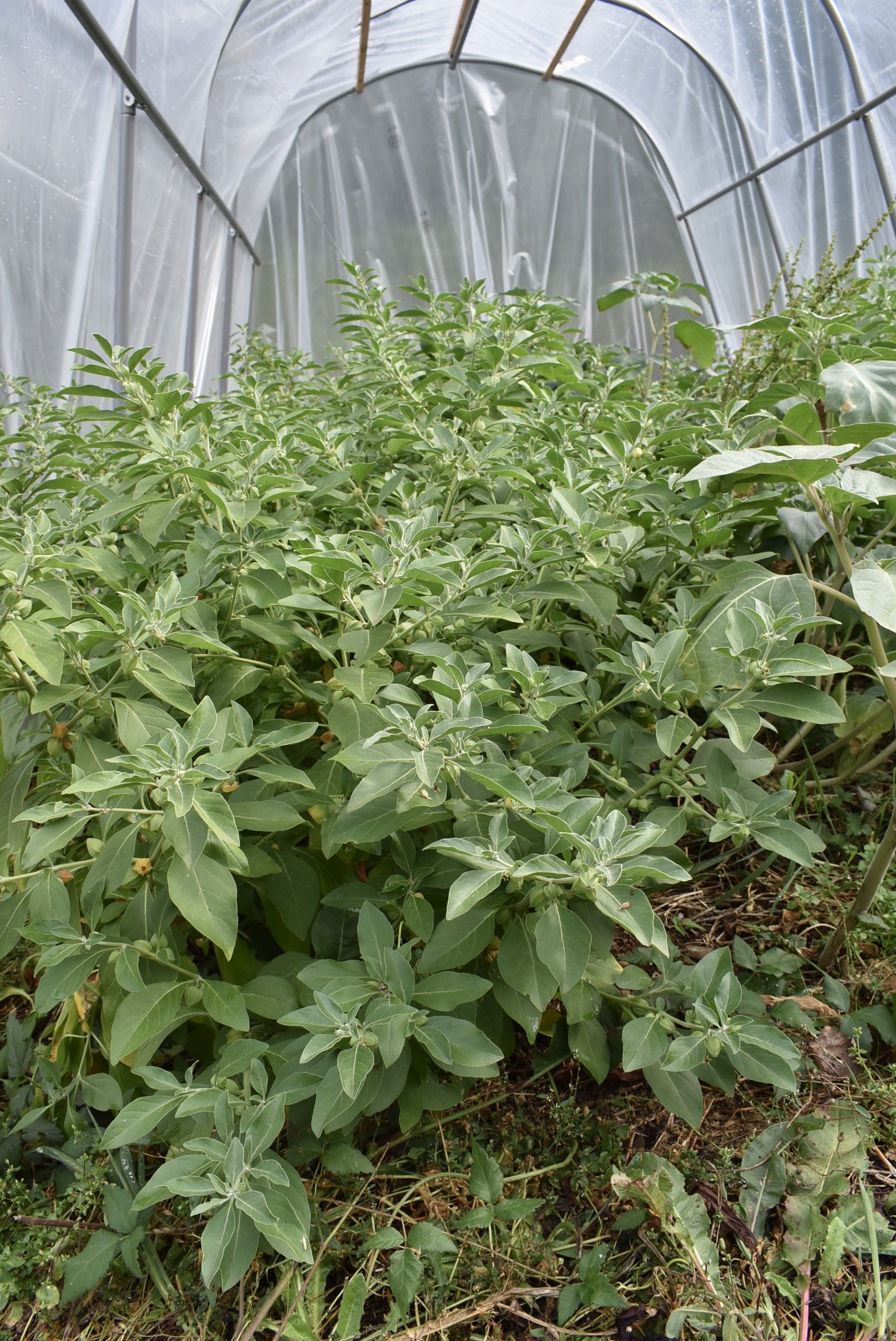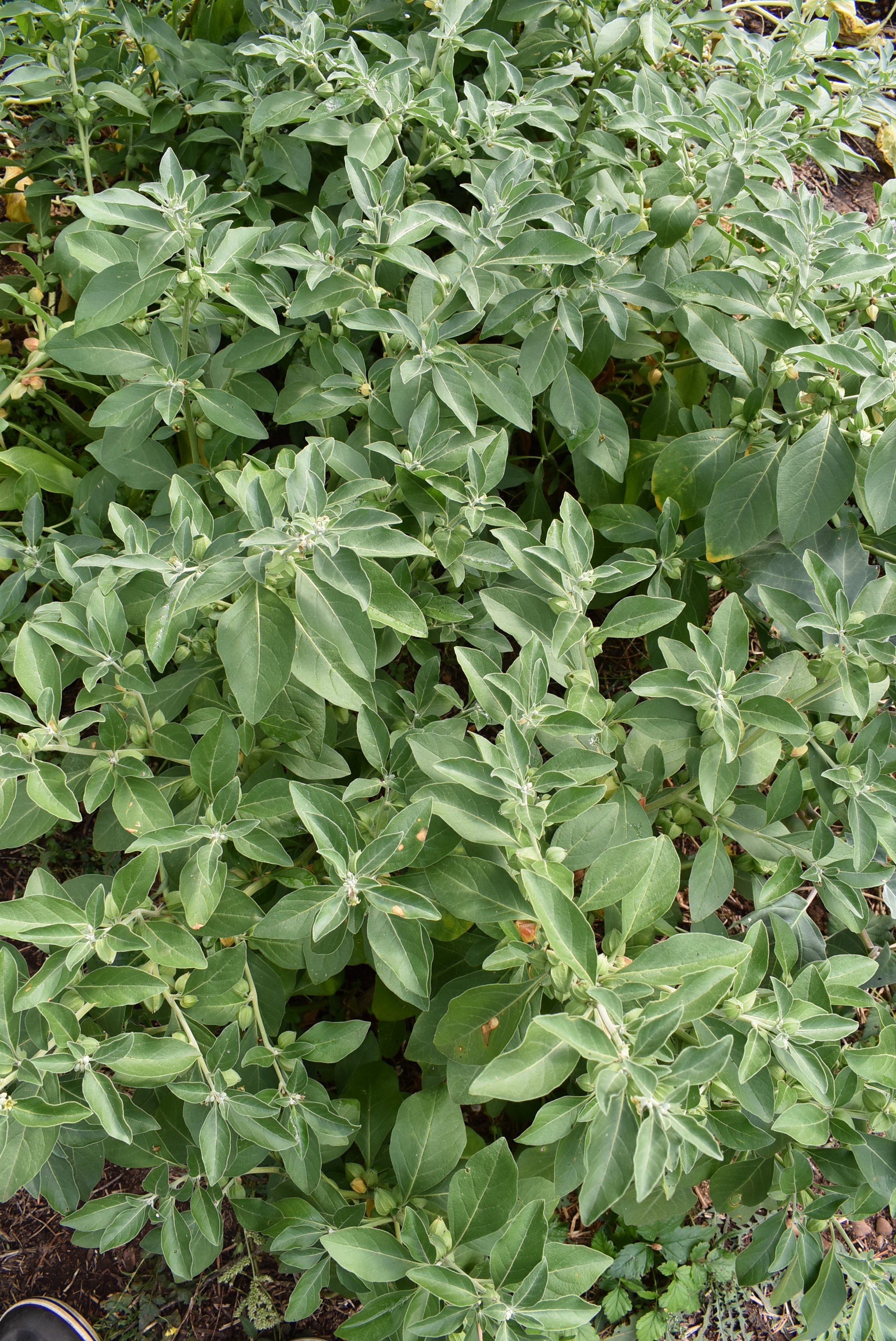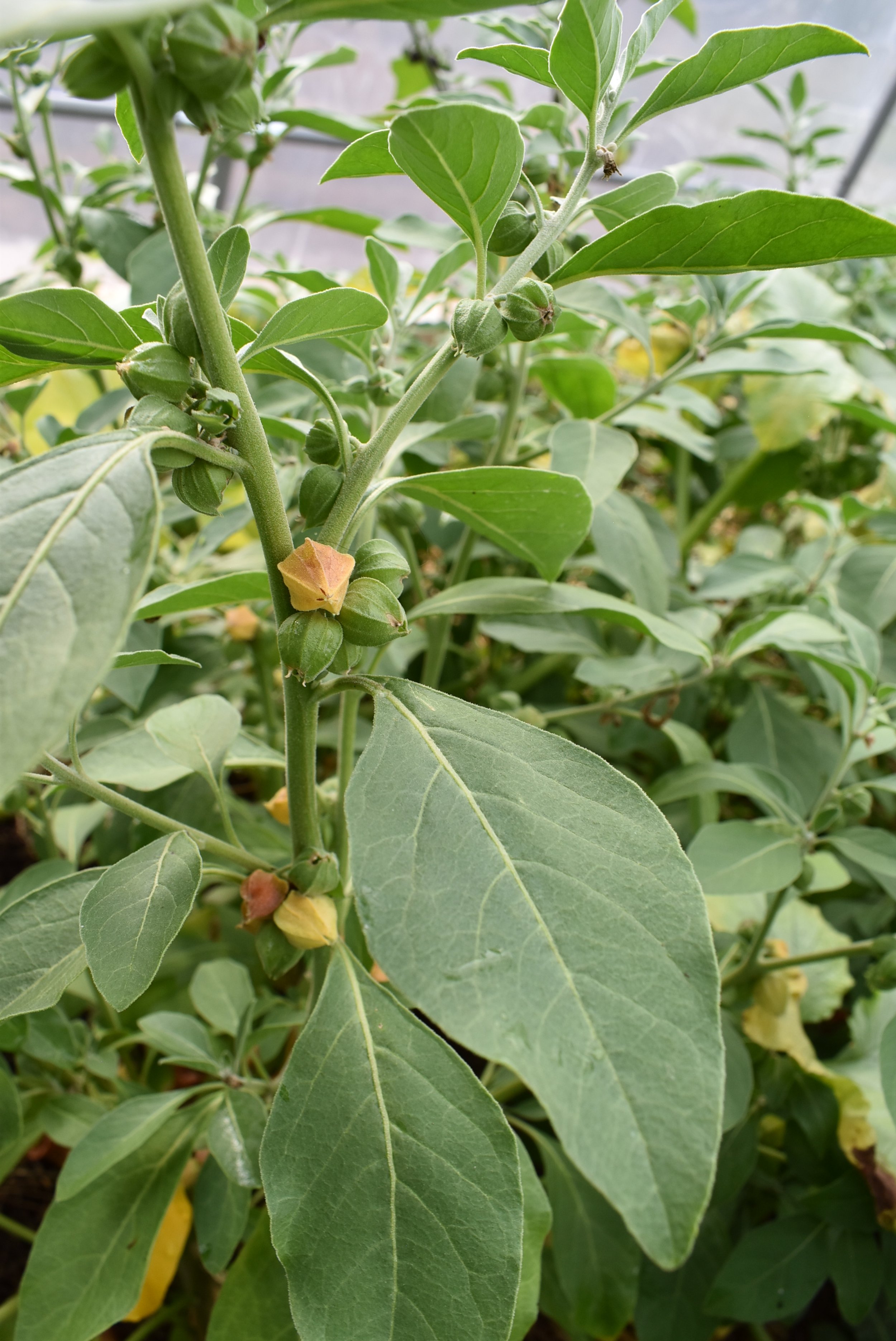Common Names
Ashwagandha, Indian Ginseng, Poison Gooseberry, Winter Cherry
Botanical Name
Withania somnifera
Plant Family
Solanaceae (Nightshade Family)
Native Range
India, Africa, Asia
Life Cycle
Perennial/Annual
Hardiness Zone
9-11, Grown as an annual in zones 4-8
Habit
Ashwagandha is an evergreen woody perennial shrub to 6ft tall in its native habitat of the hot and dry topics. Here at our zone 8 farm it grows to about 3 feet tall and 2 feet wide in one season. It produces small light green flowers which then form attractive reddish-orange berries concealed inside transparent paper coverings, similar to how a tomatillo grows. In fact Ashwagandha and Tomatillos are very closely related, and were once placed in the genus Physalis.
Sun/Soil
Ashwagandha plants need full sun, and will do fine in average soil with good drainage.
Germination/Sowing
Seeds germinate very easily once the soil temp reaches an average of 21C. If grown as an annual, Ashwagandha is best started early in the spring to provide an extended growing season. This can be done anytime in April or May, with sizeable roots forming by October. Once all danger of frost has passed and the soil has warmed Ashwagandha seedlings can be transplanted outdoors ~ we usually time this with the planting of other hot crops such as tomatoes and basil.
Growing/Care
The plants thrive in arid conditions and are happy in the heat. We like to grow our Ashwagandha plants in the greenhouse but this is not necessary so long as you provide a sheltered, well-drained spot with full sun. Ashwagandha has been used in Ayurvedic medicine for thousands of years. Often called “Indian ginseng,” its roots are prized for boosting vitality, reducing stress, and improving sleep. Native to India and other parts of Asia, Ashwagandha is an evergreen woody perennial that can reach up to 6 ft tall. It’s frost-tender and hardy only to zone 9, so in temperate regions it’s usually grown as an annual, reaching about 3 ft tall and 2 ft wide in a single season.
Ashwagandha is relatively easy to grow - the trick is to give the plants as long a growing season as possible, and as much heat as possible. In zones 8 and cooler, Ashwagandha is usually treated as an annual; in warmer zones that still experience frost, such as zone 9 in parts of Southern Vancouver Island, the plants behave as herbaceous perennials - foliage and woody stems may be killed by frost while the roots survive and re-sprout in spring.
Ashwagandha roots can be harvested in late fall anytime after the first frost and before the ground freezes. The entire plant can be dug and the roots trimmed off the crown of the plant. The roots have a bit of a tough woody core and will need to be processed by hand into smaller sections before finishing with a food processor to increase the surface area before making into a fresh plant tincture. (The smell of the fresh chopped root is delightfully sweet and pungent!) The same hand-processing technique should also be used before drying, the roots get quite tough and are hard to process before drying. The roots dry well and can be brewed into teas, or if you have a powerful grinder, made into powered which can be added to smoothies and sprinkled on food.
Culinary Uses
The dried roots are traditionally dried, powdered and added to food.
Medicinal Uses
Ashwagandha has been used in traditional Ayurvedic medicine for many thousands of years. Sometimes known as ‘Indian Ginseng’ the roots of Ashwagandha are used in herbal medicine to increase vitality in the body, reduce stress and improve quality of sleep.
Themes
Drought Tolerant, Low Maintenance, Apothecary Garden, Deer Resistant.














